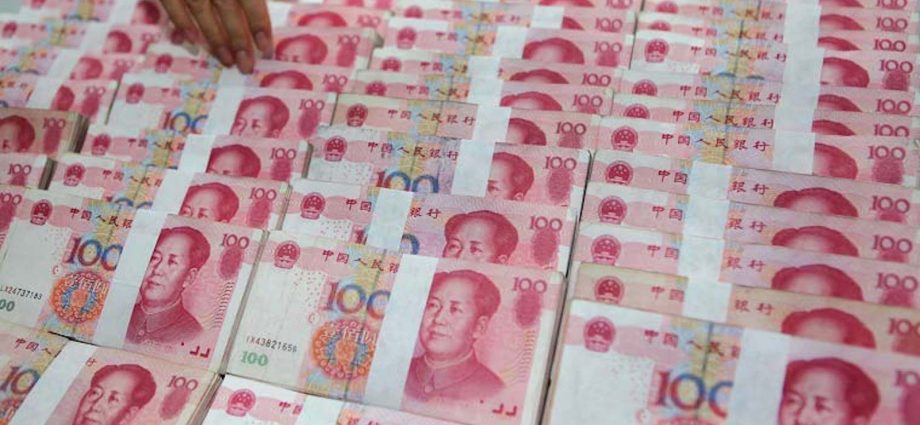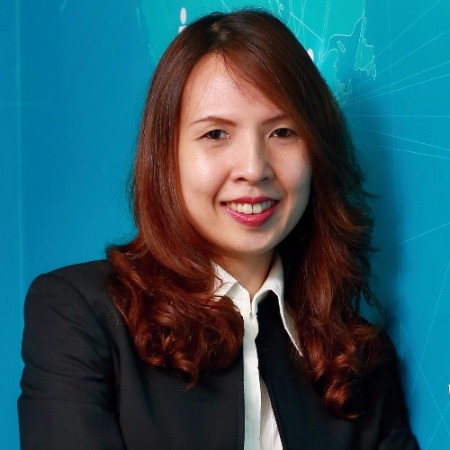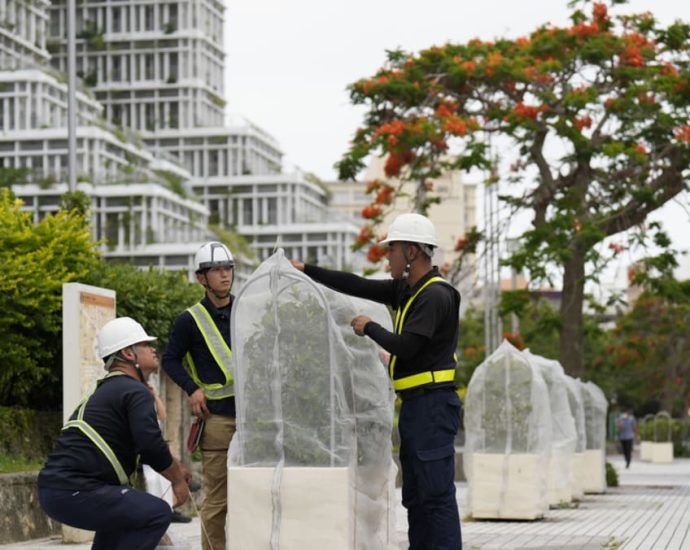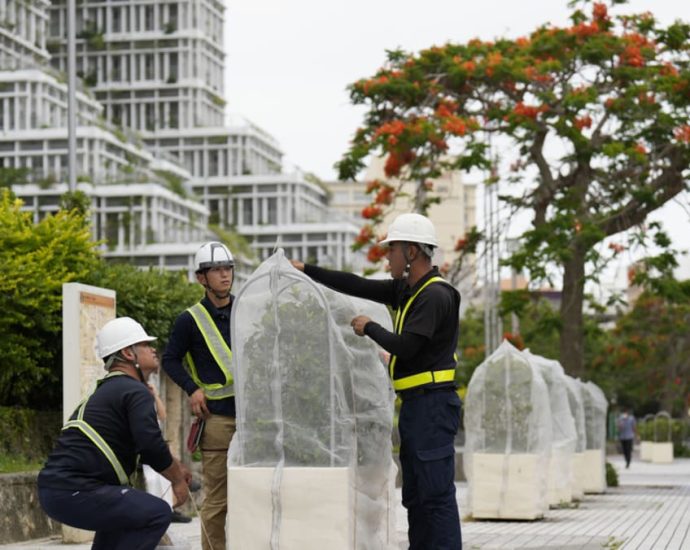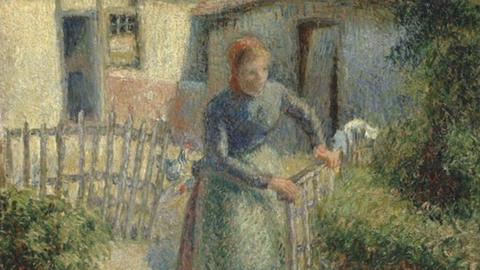Ukraine war gives Chinaâs yuan a needed boost
The Chinese economy’s sheer size and rapid growth are impressive.
China maintained one of the highest economic growth rates in the world for more than a quarter of a century, helping lift over 800 million people out of poverty in just a few decades.
The country is the largest exporter in the world and the most important trading partner of Japan, Germany, Brazil and many other countries. It has the second-largest economy, after the United States, based on the market exchange rate – and the largest of all based on purchasing power.
And yet the yuan still lags as a major global currency. The war in Ukraine, which started in February 2022, may change that.
As a professor of finance and expert on international finance, I understand how this geopolitical conflict may put China’s currency on the next phase of its path to becoming a global currency – and prompt the onset of the decline of the US dollar from its current dominance.
Chinese yuan’s slow progress
China has long wanted to make the yuan a global force and has mounted significant efforts to do so in recent years.
For example, the Chinese government launched the Cross-Border Interbank Payments System, or CIPS, in 2015 to facilitate cross-border payments in yuan. Three years later, in 2018, it launched the world’s first yuan-denominated crude oil futures contracts to allow exporters to sell oil in yuan.
China has also emerged perhaps as the world’s largest creditor, with the government and state-controlled enterprises extending loans to dozens of developing countries. And China is developing a digital yuan as one of the world’s first central bank digital currencies. The trading hours for the yuan were recently extended on the mainland.
Thanks to these efforts, the yuan is now the fifth-most-traded currency in the world. That is a phenomenal rise from its 35th place in 2001. The yuan is also the fifth-most-actively used currency for global payments as of April 2023, up from 30th place in early 2011.

Rankings can be misleading, though. The yuan’s average trading volume is still less than a 10th of the US dollar’s. Moreover, almost all trading was against the US dollar, with little trading against other currencies.
And when it comes to global payments, the actual share of the yuan is a mere 2.3%, compared with 42.7% for the dollar and 31.7% for the euro. The yuan also constituted less than 3% of the world foreign exchange reserves at the end of 2022, compared with 58% for the dollar and 20% for the euro.
US dollar’s dominance questioned
The US dollar has reigned supreme as the dominant global currency for decades – and concern about how that benefits the US and potentially hurts emerging markets is not new.
The value of the US dollar appreciated significantly against most other currencies in 2022 as the Federal Reserve hiked interest rates. This had negative consequences for residents of almost any country that borrows in dollars, pays for imports in dollars, or buys wheat, oil or other commodities priced in dollars, as these transactions became more expensive.
After Russia invaded Ukraine in early 2022, the US and its Western allies put sanctions on Russia, including cutting Russia’s access to the global dollar-based payments system known as the Society for Worldwide Interbank Financial Telecommunication, or SWIFT. That clearly displayed how the dollar can be weaponized.
With Russia largely cut off from international financial markets, it stepped up its trade with China. Russia began receiving payments for coal and gas in yuan, and Moscow increased the yuan holdings in its foreign currency reserves. Russian companies like Rosneft issued bonds denominated in yuan. According to Bloomberg, the yuan is now the most-traded currency in Russia.
Other countries took notice of Russia’s increasing use of the yuan and saw an opportunity to decrease their own dependency on the dollar.
Bangladesh is now paying Russia in yuan for the construction of a nuclear power station. France is accepting payment in yuan for liquefied natural gas bought from China’s state-owned oil company.
A Brazilian bank controlled by a Chinese state bank is becoming the first Latin American bank to participate directly in China’s payments system, CIPS. Iraq wants to pay for imports from China in yuan, and even Tesco, the British retailer, wants to pay for its Chinese imported goods in yuan.
The combined dollar amount of these transactions is still relatively small, but the shift to yuan is significant.
Yuan still not freely available
China keeps a tight grip on money coming in and out of the country. Such capital controls and limited transparency in Chinese financial markets mean China still lacks the deep and free financial markets that are required to make the yuan a major global currency.
For the yuan to achieve a truly global standing, it needs to be freely available for cross-border investment and not just serve as a payment medium to accommodate trade.
But the war in Ukraine may have just made it feasible for the yuan to eventually join the ranks of the dollar and the euro – even if the volume isn’t there yet.
And any US policy decisions that weaken the reputation and strength of US institutions – such as the recent drama over raising the debt ceiling, which brought the government to the brink of default – will accelerate the rise of the yuan and decline of the dollar.
Tuugi Chuluun is an associate professor of finance at Loyola University Maryland.
This article is republished from The Conversation under a Creative Commons license. Read the original article.
Paywatch and KB Bukopin Partner to Launch Bank-Backed EWA Service
The service is has more than 200,000 users globally
It is the only backed and regulator-approved EWA in Asia
Paywatch partnered with Bank KB Bukopin to launch Asia’s first bank-backed EWA service in Indonesia. Paywatch is an Earned Wage Access (EWA) provider. The launch of this service follows the signing of an MoU…Continue Reading
15 furniture stores in Singapore with the best vintage and modern selections

Need a clever space-saving solution? The Distrikt Bed has your back, or rather, your side tables. And for those living in studio apartments, fear not – the bed also comes in a sofa version, saving you from the clunky presence of coffee tables.
315 Outram Rd, #03-02 Tan Boon Liat Building, Singapore 169074
2. Grey and Sanders
Nothing in nature is perfect, and Grey and Sanders lets you bring that notion into the quintessential mid-century modern home. Live edges of wood slabs are proudly displayed, alongside freckled leather that age well like patina. Here, flaws are not merely tolerated but celebrated.
Move Forward speaker pick named mid-month

The Move Forward Party (MFP) is expected to finalise its candidate for the House Speaker post in the middle of this month, said party secretary-general Chaithawat Tulathon.
He said the party has not decided who it will nominate, but the matter should be settled in this month when the Election Commission is expected to start endorsing poll winners.
Mr Chaithawat said the MFP and Pheu Thai, who are locking horns over the post, will solve the dispute within two weeks.
Pheu Thai leader Cholnan Srikaew said his party would not discuss who it will nominate for the House Speaker post until it reaches an agreement with the MFP.
“It was agreed at the recent meeting that the issue would not affect the coalition formation. This means if we have an agreement, the coalition formation will proceed without any conflict,” Mr Cholnan said.
“We don’t want any conditions. We don’t want the issue to be settled in a free vote.”
Khunying Sudarat Keyuraphan, leader of the Thai Sang Thai Party, on Thursday called on the MFP and Pheu Thai to sort out the issue instead of allowing a free vote over the selection of the House Speaker.
“A free vote will cause problems in the formation of the government. They should finalise it,” she said.
Meanwhile, acting Democrat leader Jurin Laksanawisit said on Thursday it is an incorrect understanding that the House Speaker’s role is to drive a political party’s agenda.
Mr Jurin said the House Speaker must maintain neutrality during parliament meetings.
He added that the House Speaker’s conduct is clearly governed by the constitution and parliamentary meeting rules.
Catcha Digital Berhad Appoints Shireen Chia Yin Ting as Independent Non-Executive Director
Chia is currently the CFO of MyAirline
She was previously with Air Asia for 11 years
Catcha Digital Berhad announced today that it appointed Shireen Chia Yin Ting (PIC) as its new Independent Non-Executive Director (INED), effective 31 May 2023.
Chia is currently the Chief Financial Officer of MYAirline, a new startup airline in…Continue Reading
Japan slammed by torrential rain as Typhoon Mawar nears
TOKYO: Parts of Japan were slammed by torrential rain on Friday (Jun 2) as Typhoon Mawar neared, bringing winds and heavy rain to a wide swathe of the country and prompting authorities to advise tens of thousands to evacuate. Mawar, which wreaked havoc on Guam earlier this week, has weakenedContinue Reading
Japan braces for torrential rain as Typhoon Mawar nears
TOKYO: Japan braced for torrential rains on Friday (Jun 2) as Typhoon Mawar neared, bringing wind and heavy rain to a wide swathe of the main islands. Mawar, which wreaked havoc on Guam earlier this week, has weakened to tropical storm strength from its earlier super typhoon status, and theContinue Reading
BTSC says it’s ready to invest in ‘missing link’

The Bangkok Mass Transit System Plc (BTSC) is ready to invest in a 2.6-kilometre missing link to connect its Yellow Line monorail to the Green Line of the Mass Rapid Transit Authority of Thailand (MRTA) at Ratchayothin and Lat Phrao stations.
Surapong Laoha-Unya, CEO of BTSC, on Thursday said the extension would benefit commuters.
“We are willing to invest in the project because the extension will benefit everyone. We are ready to discuss the matter with the MRTA,” said Mr Surapong.
The Yellow Line links Lat Phrao in Bangkok with Samrong in Samut Prakan. There are 23 stations along the 30.4-kilometre line. The monorail has a connection to the MRTA’s Green Line at Samrong station.
The missing link would run along Ratchadaphisek Road in Bangkok and link to the Green Line at Ratchayothin station.
According to a source, the extension project is worth around 3-4 billion baht. Without the missing link, commuters wishing to switch from the Yellow Line to the Green Line will have to re-route their journey through the MRTA’s Blue Line, increasing travel costs for commuters.
The source said if the MRTA agrees with the BTSC’s proposal to invest in the missing link, the MRTA would also ask for compensation for lost revenues from its Blue Line.
Mr Surapong said the Yellow Line would kick off a trial service at 9am on Saturday before its full commercial launch around the beginning of next month.
Currently, the BTSC has submitted an estimated fare range based on the consumer price index (CPI) to the MRTA for approval. The rate will be 15-45 baht.
Afterwards, the MRTA will submit the proposal to the Ministry of Transport and the cabinet for further approval.
“The BTSC is ready for the trial run as the safety and facilitation of the project is now provided. The project will help mitigate traffic congestion, particularly during rush hours, on Lat Phrao Road,” he said.
The BTSC estimated that it would earn an income of around a billion baht from the launch of the Yellow Line.
Poland’s quest to retrieve priceless Nazi-looted art
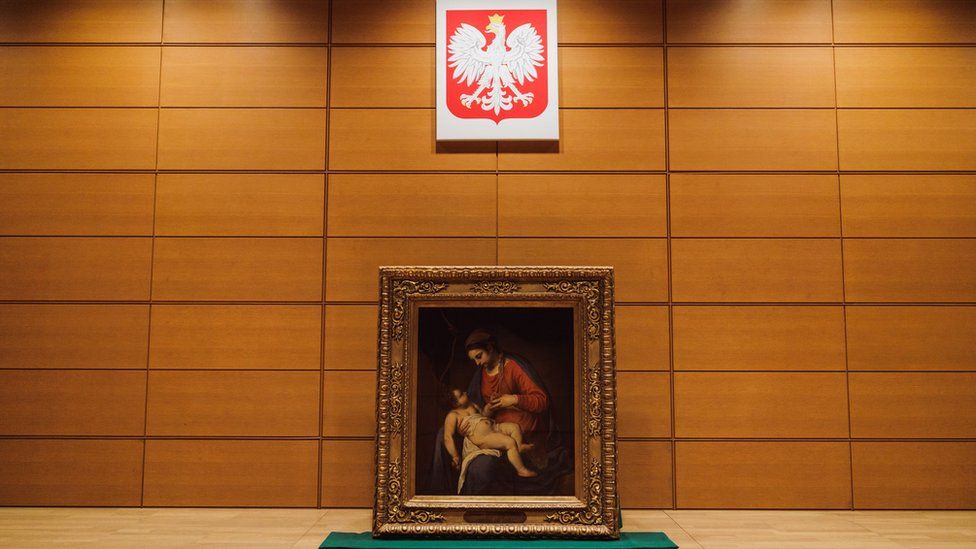 Polish Institute in Tokyo
Polish Institute in TokyoWhen the Nazis occupied Poland in World War Two, many of the country’s priceless pieces of art were stolen.
One of those was Madonna with Child, a 16th Century painting attributed to Italian Alessandro Turchi. A Nazi official who oversaw the looting of art included the painting on a list of hundreds taken from occupied Poland.
But the painting is finally returning home, after being discovered in Japan and handed over to Polish authorities during a ceremony in Tokyo this week.
It is one of 600 looted artworks that Poland has managed to successfully bring home, but more than 66,000 so-called war losses are yet to be recovered.
Poland recently launched a campaign seeking the return of hundreds of thousands artworks and other cultural items still missing after German and Soviet occupations in World War Two. It is also seeking $1.3 trillion in reparations from Germany for damage incurred by occupying Nazis.
Experts believe more art will be discovered with the passage of time as heirs to looted artwork attempt to sell pieces without being aware of their history.
Madonna with Child is thought to have been transferred to Germany in 1940 during the Nazi occupation of Poland. The Nazis often looted art belonging to Jewish families before killing them.
The painting was included on a list of 521 artworks in occupied Poland compiled by Kajetan Mühlmann, a Nazi official who oversaw the looting of art.
The painting reappeared in the 1990s, when it was sold at a New York auction.
It was due to be auctioned in January last year, but the sale was halted after Polish authorities spotted the piece. Once it was proven to be the looted painting, the auction house and the painting’s owner agreed to return it to Poland. An official handing-over ceremony took place in Tokyo on Wednesday.
Polish art historian Natalia Cetera said the return of masterpieces like Madonna with Child help restore pride in the country’s art heritage.
Poland had Rembrandt and Raphael pieces stolen, as well as internationally recognised Polish masterpieces, she said.
“So whenever there is this situation where the artworks come back to Polish collections, you feel proud because it shows the importance of Polish collections that is sometimes forgotten,” Ms Cetera told the BBC.
“It means we have some strong focus on remembering our heritage, our collections and the strength we used to have in art, because this is something we tried to rebuild after the war and this is a long process to be recognised again.”
Ms Cetera says she believes there has been a shift in recent years in cultural heritage “being seen as a common good”.
Christopher Marinello, founder of Art Recovery International, has spent more than 30 years finding missing masterpieces. He believes that more pieces could start showing up as looted artwork gets handed down to the next generation, with the new heirs unaware of their history.
“We’re talking about a generation ago now and these looted objects are being left to their heirs when the possessors pass away and the children don’t necessarily know the history and they decide to sell it,” Mr Marinello said.
Polish authorities have recorded stolen pieces of artwork on Interpol and other private and government databases.
“There’s also a great number of art historians out there who are doing research of looted artworks from Poland and they’re spotting them too,” Mr Marinello said.
“The more that tech improves and auction houses start to post everything online, there’s more eyes looking for the objects that have been looted.”
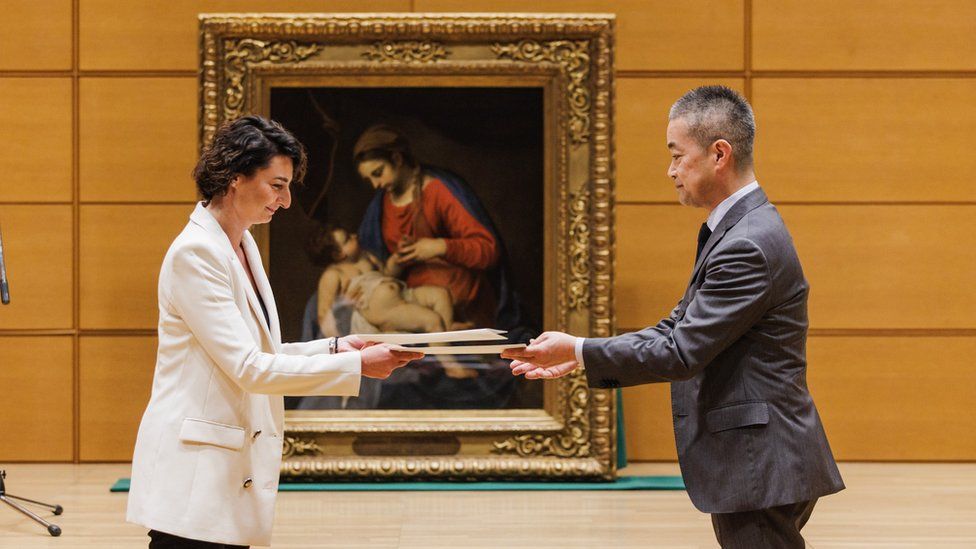
Mr Marinello believes there is also a “generational shift” in attitudes to stolen masterpieces. He’s currently working on a case where a man in Chicago contacted him about a piece he believed his grandfather stole from a German museum in World War Two.
“They’d had it for an entire generation and now they realise that they can’t sell it and that they would rather give it back than have any more trouble over the issue.”
But the law varies from country to country, and sometimes a stolen piece can only be returned with the goodwill of the current owner.
Japan, where Madonna with Child was found, “is not a great country to recover stolen art from”, Mr Marinello says.
“It’s really up to the possessor in many cases to do the right thing… to understand that something was looted or stolen and that it should be returned, because you can’t rely on a lawsuit under Japanese law,” he said.
Ms Cetera said that the successful retrieval of Madonna with Child was a source of pride, but is unsure whether the passion for bringing stolen artwork back to Poland will continue with future generations.
“The question is whether it is important to the next generation – Gen Z and younger generations, do they really care? From what I observe, this might not be the case,” she said.
Digitised art collections might mean people losing interest in the physical form, she said.
“At some point maybe we won’t have to retrieve artworks… because we will have it in the Cloud and we will be able to reach it any time anywhere, no matter who has it.
“This digitisation and tech that is coming might at some point suppress the need of retrieving physical artworks.”
You may also be interested in:
This video can not be played
To play this video you need to enable JavaScript in your browser.
Related Topics
-
-
24 October 2019
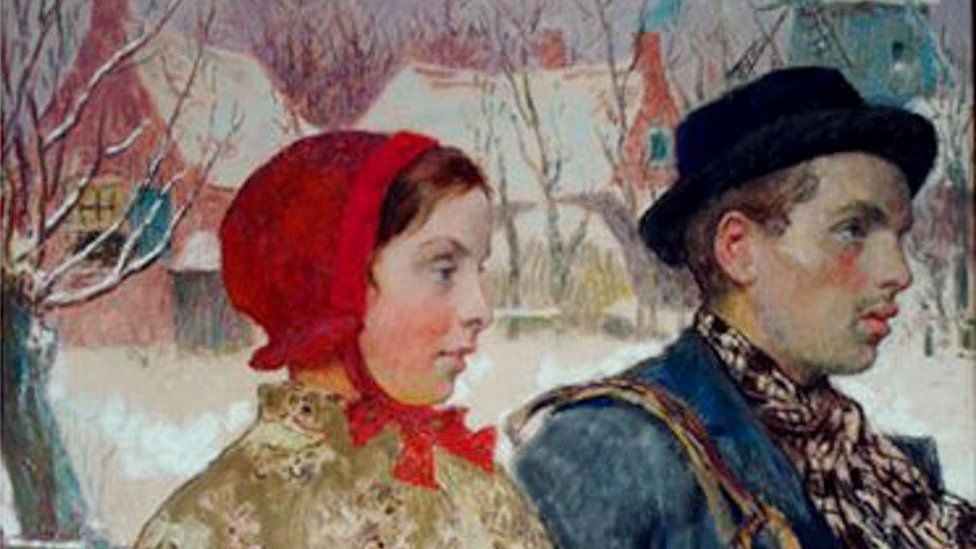
-
-
-
1 May 2019
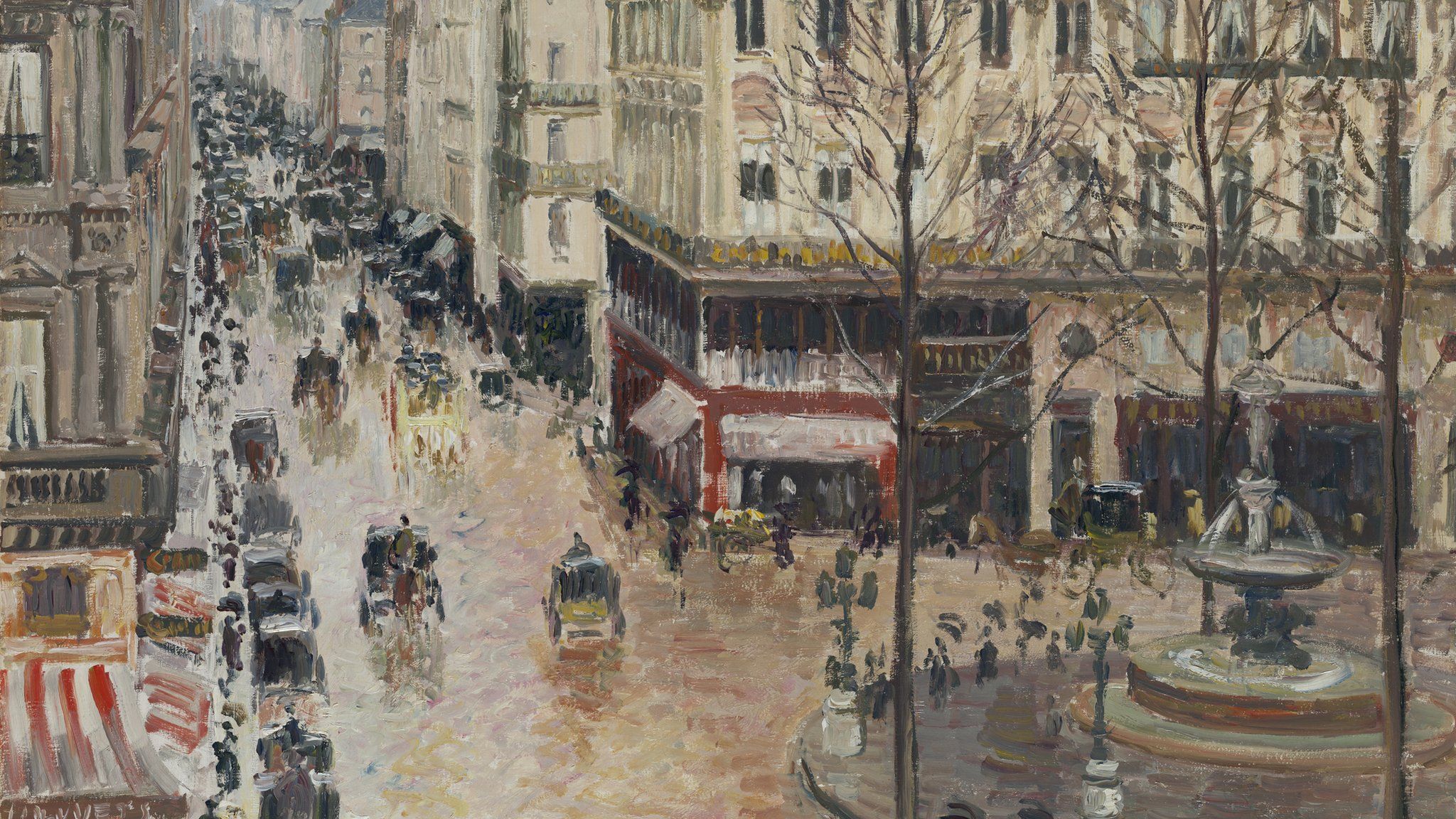
-
-
-
1 June 2021

-
GPO touts new drug to help quit smoking

The Government Pharmaceutical Organization (GPO) has unveiled a locally developed cytisine — an alkaloid that occurs naturally in certain plants — that can help people quit smoking, reduce treatment costs and potentially save over 12 million baht in imported drugs.
Dr Mingkwan Suphanpong, the GPO’s director, said there are more than 9.9 million people in Thailand over the age of 15 who are classed as frequent smokers.
She was speaking on World No Tobacco Day, which fell on Wednesday.
Considering that some of these will die from smoking-related diseases like lung or oesophageal cancer, emphysema and heart disease, the health costs are significant, she said.
Thailand has five listed drugs that can be prescribed to help people kick the habit: varenicline, bupropion, nicotine replacement therapy, nortriptyline and little ironweed.
Only the last two appear on the National List of Essential Medicines, said Dr Mingkwan.
Human trials have shown the GPO’s cytisine to be safe and effective, she said.
Dr Ming- kwan added the drug is now in the process of being approved by the Food and Drug Administration.

Mingkwan: Drug costs less
She added that cytisine GPO will be a regulated drug which is only available at hospitals. Dr Mingkwan said the cost of helping smokers quit will be greatly reduced if cytisine can serve as a replacement for varenicline. Moreover, the GPO version can save up to 12 million baht per year by serving as a substitute for imported medicine, she said.
The GPO plans to distribute cytisine in January. The Department of Thai Traditional and Complementary Medicine has suggested smokers try herbal medicine first to kick the habit.
Dr Thiti Sawangtham, the department’s deputy permanent secretary, said the three best herbal medicines in this regard are clove, little ironweed and lime.
The first two can be taken orally to reduce nicotine cravings while ironweed can be brewed as an after-meal tea.
Dr Thiti said Chinese traditional medicine recommends acupuncture to quit smoking. Research suggests this produces serotonin, which eases the cravings for nicotine and helps people balance their metabolism and sleep cycle. More information about the application of herbal medication is available on the department’s official Facebook page or by calling (02) 591-7007.

